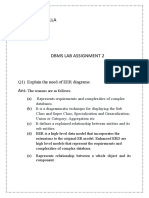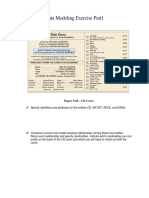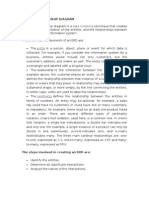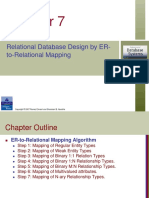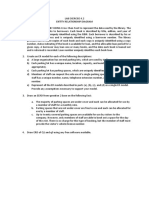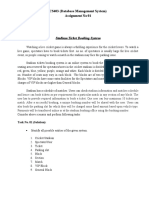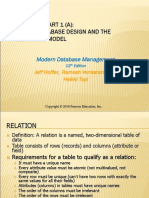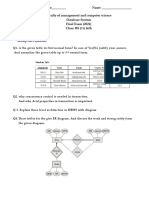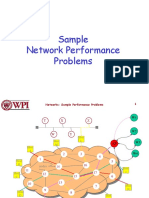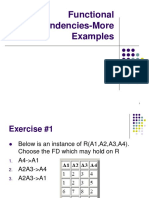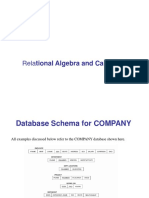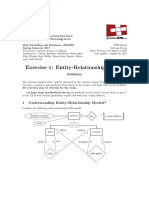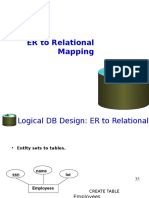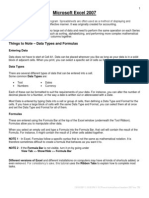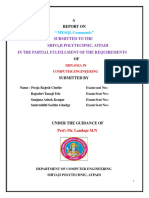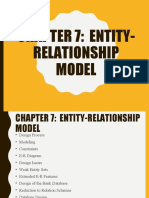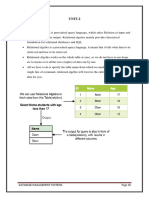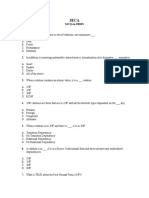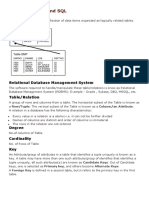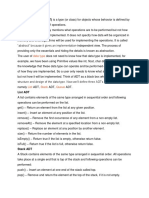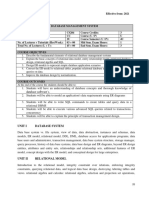0% found this document useful (0 votes)
541 views64 pagesTranslation of ER-diagram Into Relational Schema
The document discusses how to translate an entity-relationship (ER) diagram into a set of tables in a relational database. It defines key database concepts like relations, primary keys, and foreign keys. The process involves representing entities as tables, relationships as links between tables using foreign keys, and normalizing the tables. It provides examples of how to model different types of relationships, like one-to-one, one-to-many, and many-to-many, and discusses capturing constraints like participation through table structures and foreign key definitions.
Uploaded by
Anupam JanaCopyright
© © All Rights Reserved
We take content rights seriously. If you suspect this is your content, claim it here.
Available Formats
Download as PPT, PDF, TXT or read online on Scribd
0% found this document useful (0 votes)
541 views64 pagesTranslation of ER-diagram Into Relational Schema
The document discusses how to translate an entity-relationship (ER) diagram into a set of tables in a relational database. It defines key database concepts like relations, primary keys, and foreign keys. The process involves representing entities as tables, relationships as links between tables using foreign keys, and normalizing the tables. It provides examples of how to model different types of relationships, like one-to-one, one-to-many, and many-to-many, and discusses capturing constraints like participation through table structures and foreign key definitions.
Uploaded by
Anupam JanaCopyright
© © All Rights Reserved
We take content rights seriously. If you suspect this is your content, claim it here.
Available Formats
Download as PPT, PDF, TXT or read online on Scribd
/ 64
